swe.: Vårtig röksvamp | nor.: Vorterøyksopp | fin.: Känsätuhkelo | dt.: Flaschen-Stäubling, Flaschenbovist
Everyone has seen puffballs in one form or the other. They grow in parks as well as in forests and are present all over Europe. For obvious reasons the English name derives from the olive-brown spore dust that leaks or “puffs” from older specimen. There are several puffball species that are suitable for kitchen purposes but not all of them taste great. Our recipe refers here to the common puffball (Lycoperdon perlatum). Young specimens are very suitable for kitchen use as long as they are purely white inside. Usually they are fried or sautéed in butter until golden.
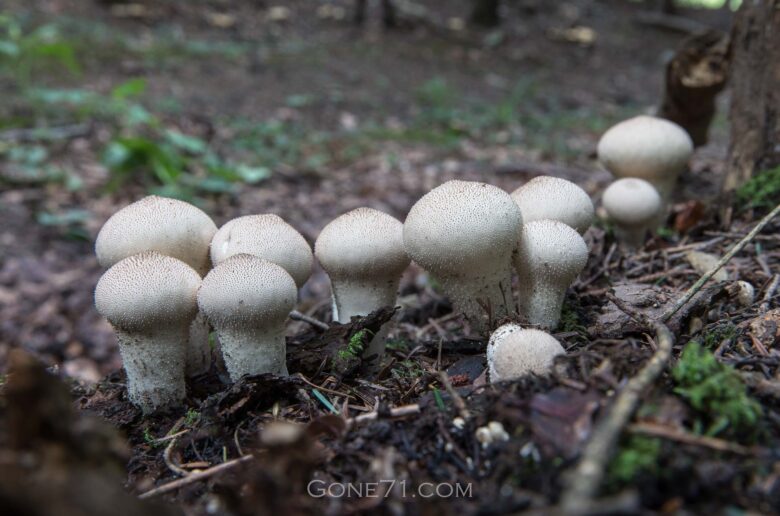
Appeareance of puffballs
The up to 10 cm high fruiting bodies resemble the shape of an upturned bottle or pear and have a clearly developed stem. The surface is covered with numerous spines that have a conical shape. This spines or warts get smaller and smaller towards the base of the stem. Young specimens are white, with increasing maturity they turn yellowish to gray-brown.
The fruit mass inside the head is initially firm and also white before it turns to olive-brown spores. In a last stage the fruiting body tears open and the ripe spores escape into the open to be spread by the wind or anyone who happens to step on them. Their spores can cause severe irritation to the lungs so be careful with older specimen!
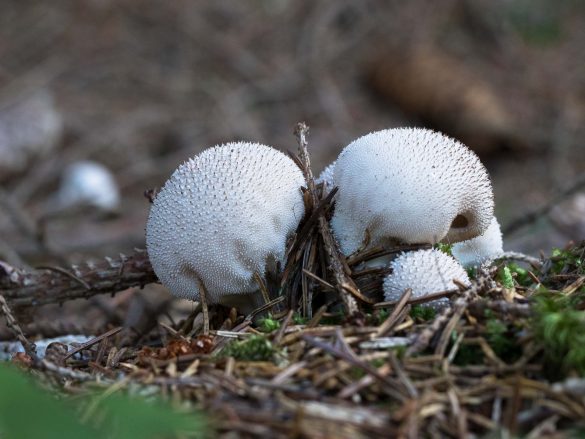
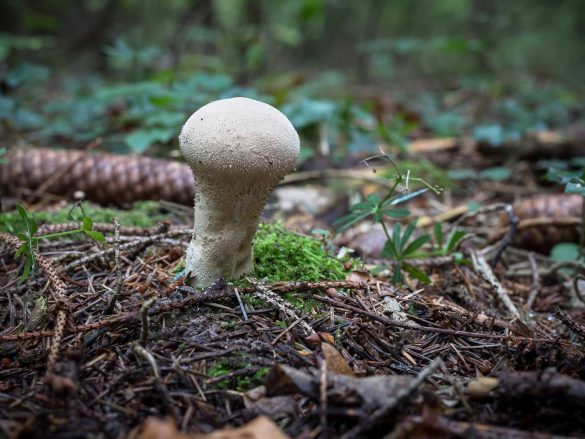
diameter: up to 5 cm
height: up to 9 cm
months: June – November
colour: white, yellowish in older stages
habitat: deciduous and coniferous forests
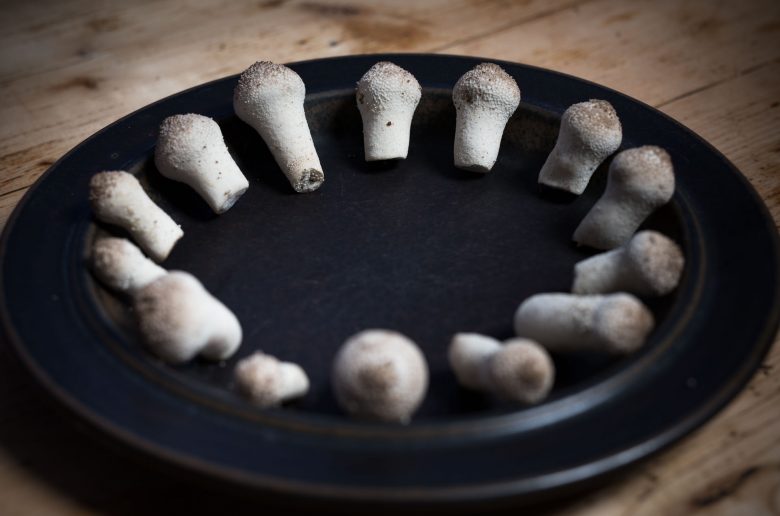
Where can you find puffballs?
As saprobionts, they decompose dead organic matter.Their main habitat are deciduous and coniferous forests and they are usually growing in goups from June to November. So if you happen to find one watch out for more.
Facts & rules about puffballs
The rule for all (European) puffballs is: If the inner fruit mass is pure-white and does not show any signs of gills they are usually edible. Gills could be an indicator for a young specimen of the absolutely deadly destroying angle (Amanita virosa) or at least unpleasant poisonou fly agaric (Amanita muscaria). Both have the appearance of white balls in early stages when they are totally covered in velum. For this reason these fungi should always be sliced vertically and the developing structures should be inspected carefully.
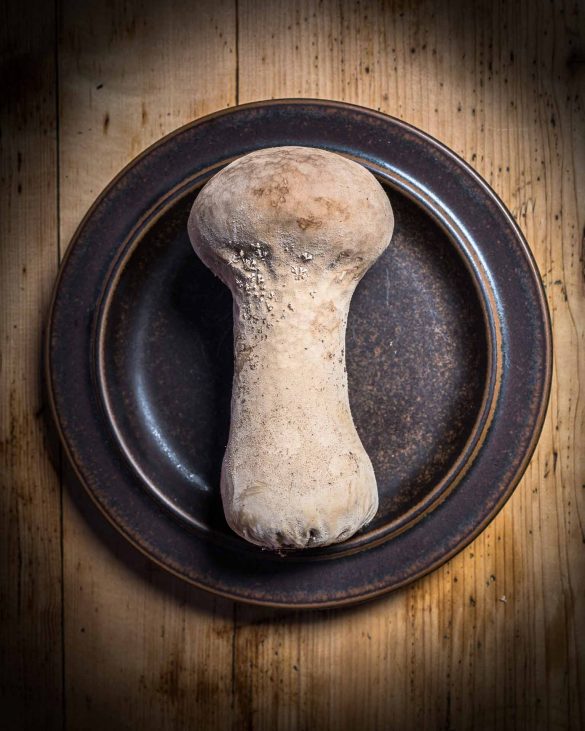
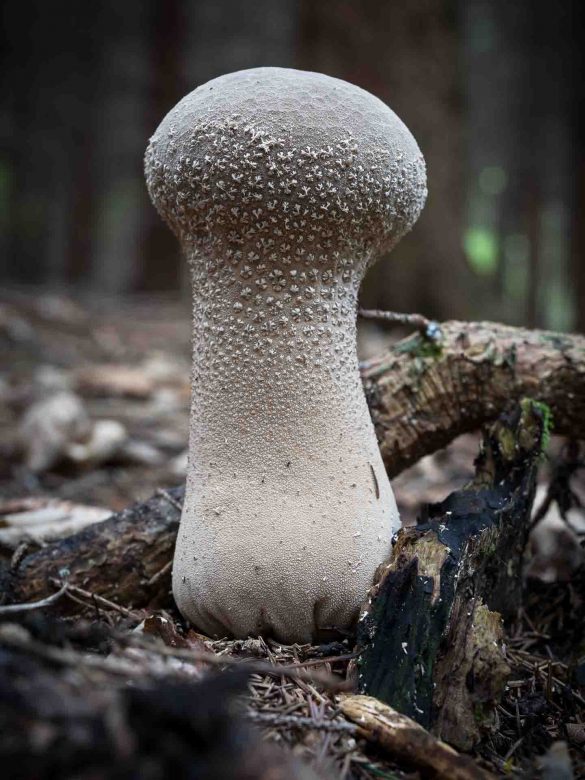
An other edible puffball species are the rather large pestel puffballs (Lycoperdon excipuliformis) that can reach dimensions of up to 25 cm. It is very siutable for frying (often breaded) and due to its size best used in slices. Other species as the pear-shaped- or stump puffball (Apioperdon pyriforme) is considered edible as well but we would recommend it more to the survivalists. Some refer to it even as ‘war mushroom’ since people ate it during times of food shortage.
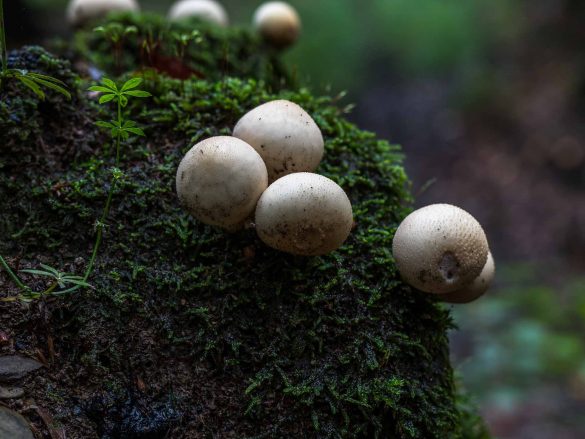
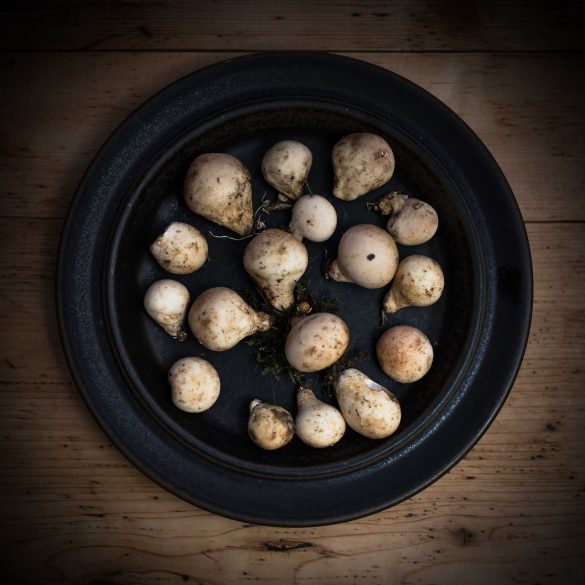
Cleaning puffballs
Roughly rub of the spines of the puffballs with your fingers. Cut the bottom end and clean them with a knife. Avoid water since puffballs will act like a sponge. For the above mentioned reasons we cut puffballs in halfs to check for gills and make sure that they are pure white inside.
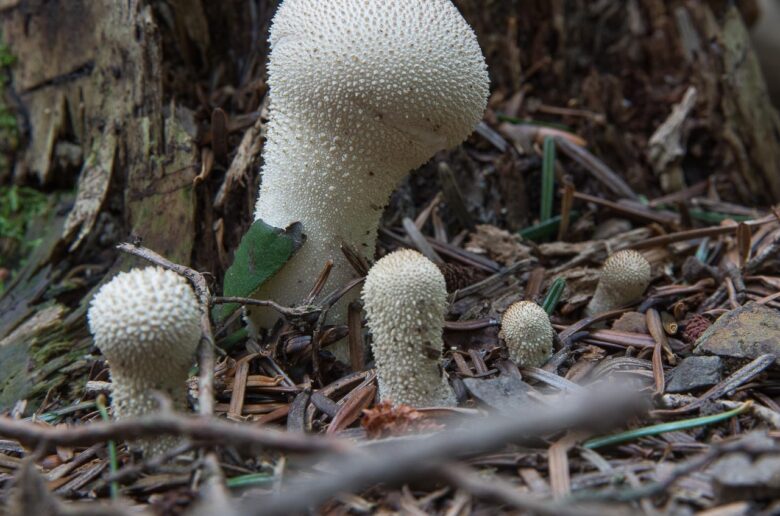
Puffball in the kitchen
Most sources recommend to consume it fried or grilled. The phenolic smell that it possesses when raw disappears completely after cooking. Puffballs should not be consumed too long after beeing collected, because the gleba rapidly decays and tends to become powdery. Bigger specimen and species as the pestle puffball we usually bread as bigger slices or chunks. If you are using very young specimen as we did here, there is usually no need of breading the small pieces. Less is more and planely frying them will give you a pleasant meal.
Due to its high vitamin and mineral content – especially magnesium, zinc and iron – it is also considered a very healthy edible mushroom.
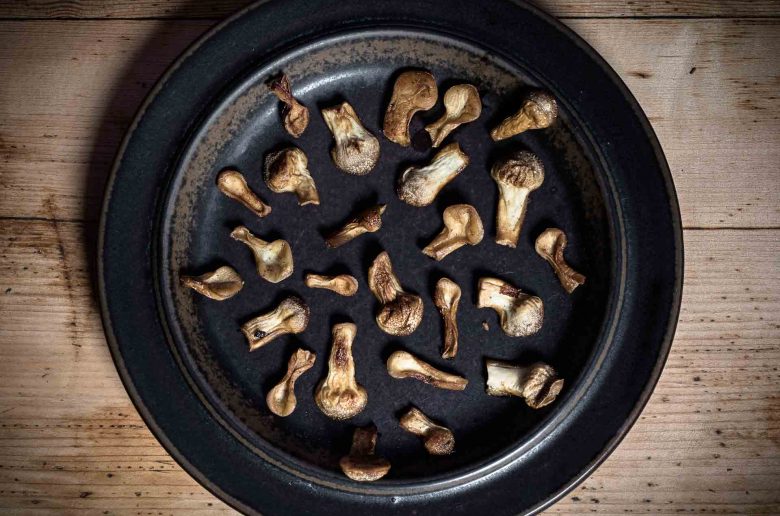
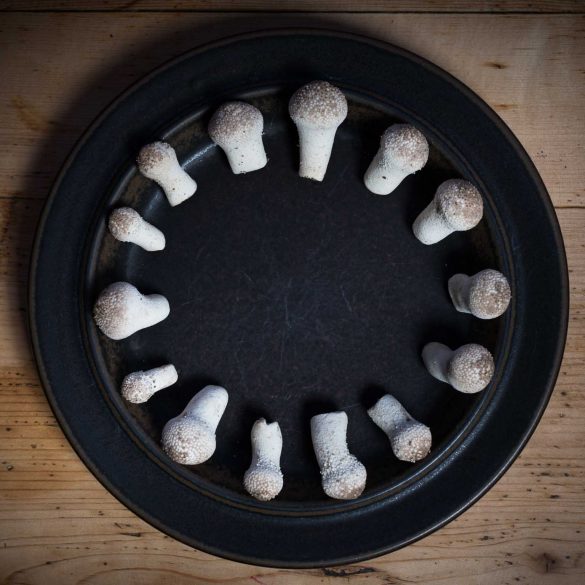
Fried common puffballs | Lycoperdon perlatum
Ingredients
Lycoperdon perlatum – 300 g
Butter – 20 g
Salt, pepper – on demand
Bread/toast – 4 slices
Instructions
- Clean the puffballs properly. Slice of the bottom end, which is usually dirty.
- Cut the mushrooms in half and check for gills. If they appear to have gills or are not purely white inside DO NOT eat them! It could be your last meal.
- Depending on the size of your mushrooms cut them in half or pieces. If you have a very large specimen you can also cut chunky slices.
- Melt the butter, add the mushrooms, pepper and salt and fry them until they get a golden look. If you want to keep your meal vegan you can use olive oil (for frying puposes).
- Serve with toast or dark bread and consume imidiatly.
Notes
If you have bigger specimen or came across some pestel puffballs (Lycoperdon excipuliformis) and want to bread them cut them into 1 cm to 1 ½ cm slices. Cover them in flour, turn them in beaten egg and cover them with bread crumbs. Salt them slightly. Fry the pieces in hot oil until golden. Serve with lemon.
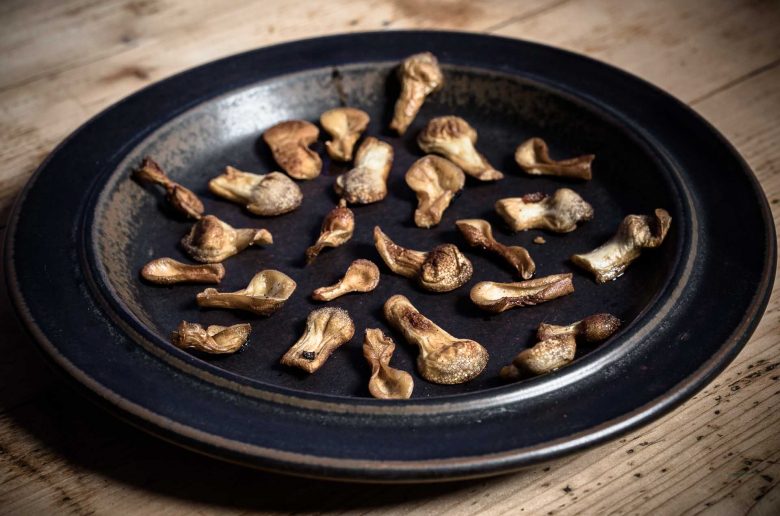
Have a look at some other interesting mushrooms
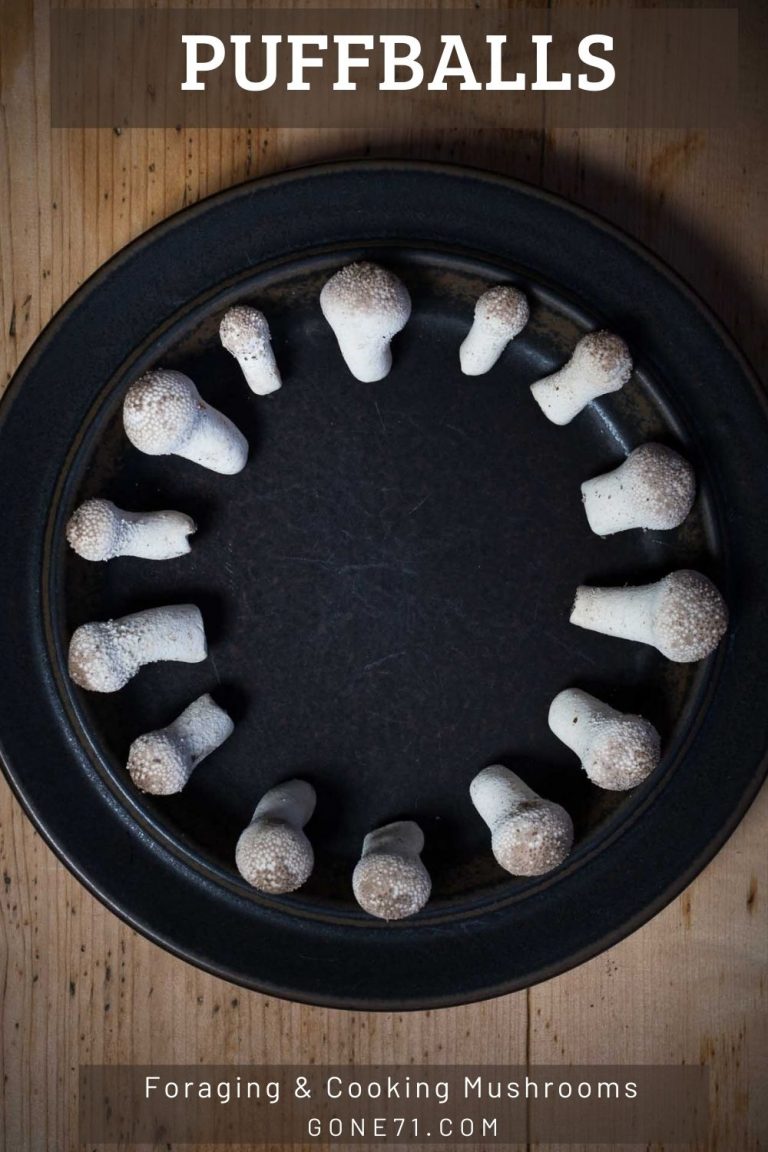
We have compiled this overview with the best of knowledge and belief, but do not claim to be complete and reserve the right to make errors.
Learn more about poisonous mushrooms and mushroom poisons here
↓↓↓

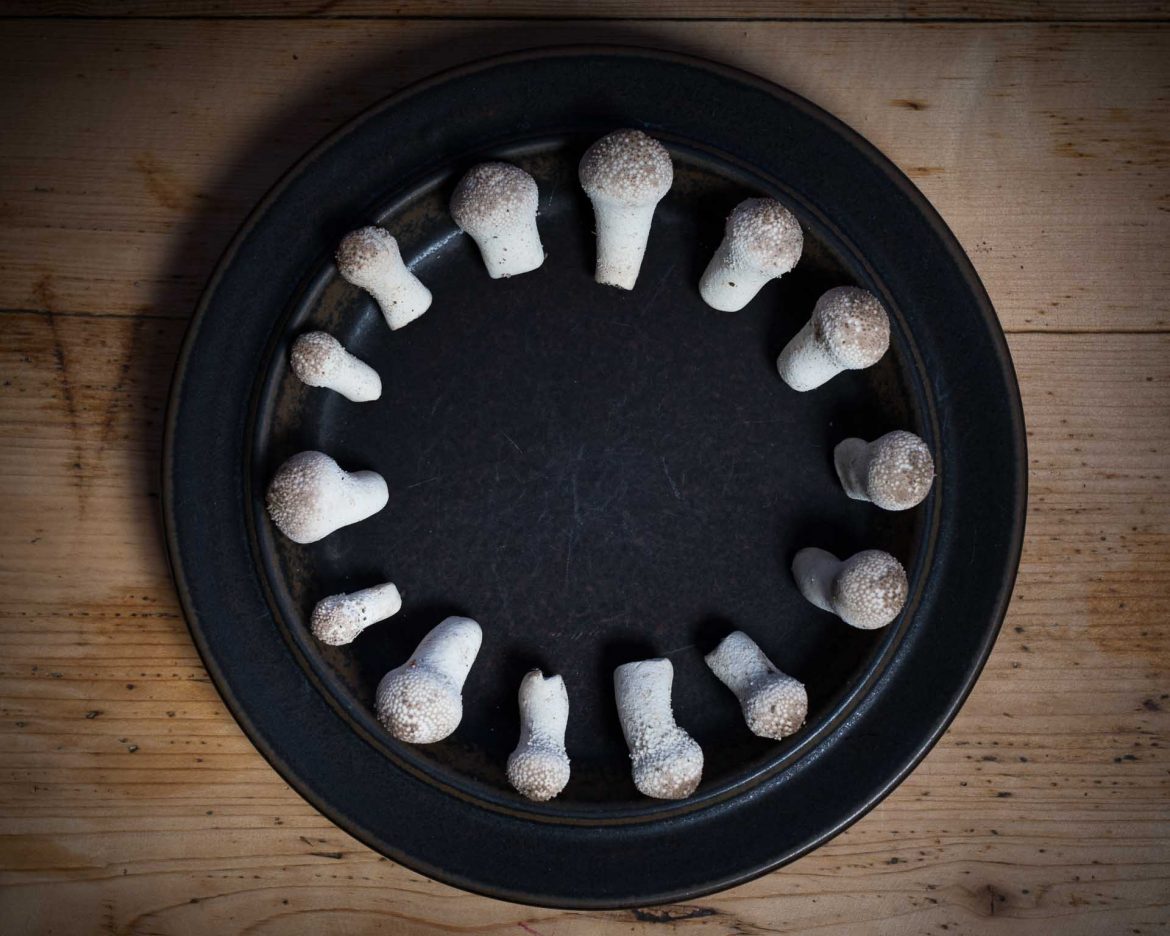
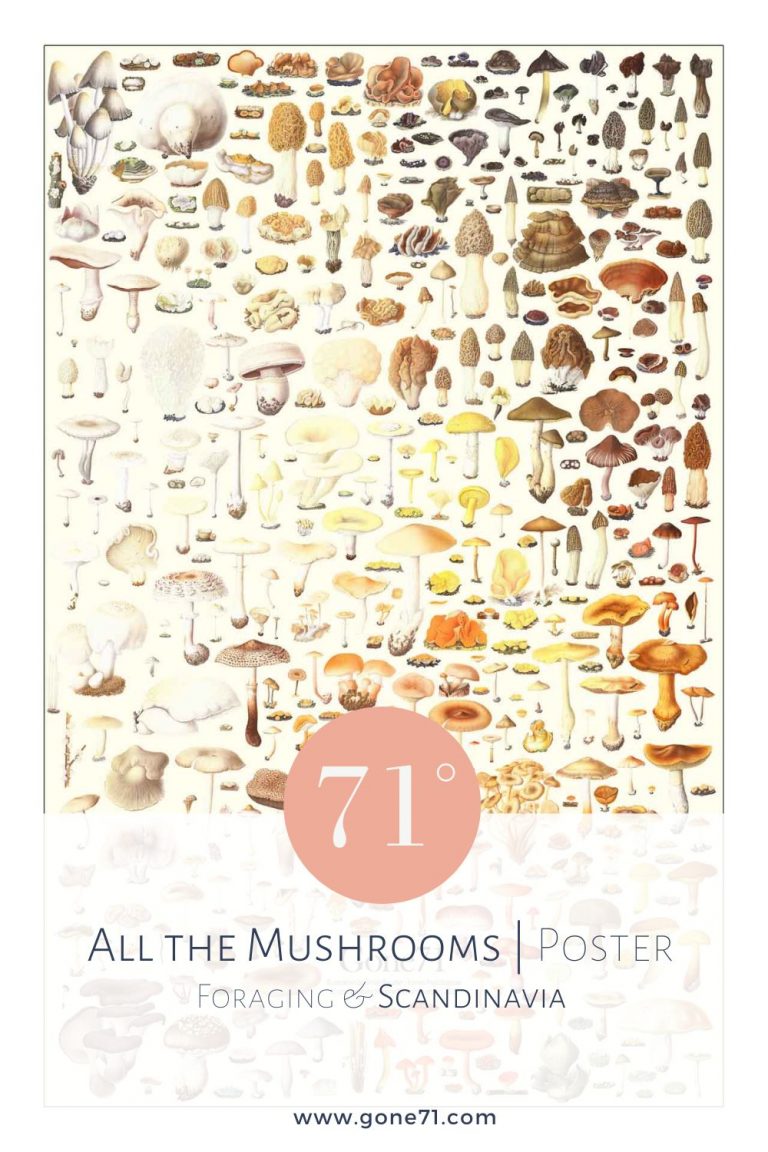
1 comment
I harvested and cooked this today! Delicious! Ruth